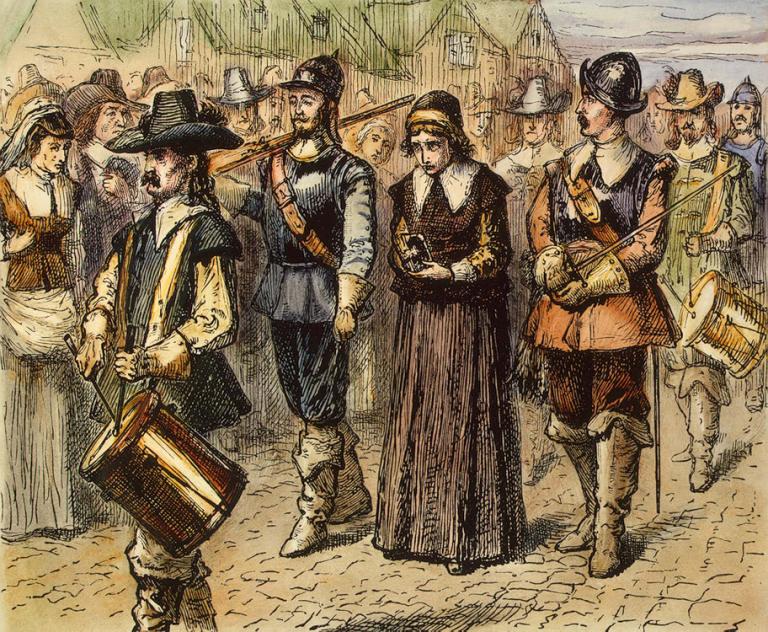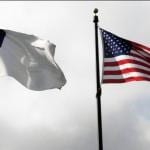More findings from the American Enterprise study by Lyman Stone that we blogged about yesterday: Promise and peril: The history of American religiosity and its recent decline.
Among the other themes in the report that we mentioned, Stone studies data about why religion has declined, both in the United States and even more so in Western Europe. Though of course a complete answer is not possible, he finds correlations between things like the decline of marriage–I would say the sexual revolution–and secularization.
He also finds a strong correlation between the secularization of educational systems and the decline of religion. At the same time, there is a historically strong correlation between religions becoming too powerful politically–as in state religions, government-sanctioned religious discrimination, and churches exercising authority–and the public resentment of religion, which also leads to periods of secularization.
Here are two quotations from the study that make these points. From Executive Summary:
Indeed, that changing legal and policy environment may be the cause of declining religiosity. Research on determinants of religiosity has found two contrasting results. First, explicitly sectarian governance, such as having a state religion, tends to reduce religiosity, because it reduces the competitiveness and diversity of the religious marketplace. Second, expansions in government service provision and especially increasingly secularized government control of education significantly drive secularization and can account for virtually the entire increase in secularization around the developed world. The decline in religiosity in America is not the product of a natural change in preferences, but an engineered outcome of clearly identifiable policy choices in the past.
And then there is this passage, from pp. 53-54, which also illustrates the paradoxes of the issue [my bolds]:
[Religious] discrimination can create secularization. Abuses by clergy can create resentments against specific religions, or even religiosity writ large, as can be seen in the Reformation itself. In the United States, Blaine Amendments began as a form of discrimination against a disliked religion (Catholicism) but have become a tool for secularization against all religions.
In this sense, the relatively high degree of religiosity in the United States may simply be due to the fact that, throughout the vast majority of our history, few religions had positions with sufficient power to make many enemies. Religious organizations in America never attracted the degree of anticlerical political attention of religious institutions in Europe: Their weakness was a kind of defense. When religious organizations command direct political power, they tend to use it in ways that might not be supported in a more democratic regime and thus make enemies.
This helps explain several paradoxes in the international data. The Nordic countries have some of the highest rates of religious affiliation in the developed world thanks to expansive state church apparatuses that have historically been supported by strict, authoritarian monarchies. But the Nordic countries also have some of the highest rates of self-reported atheism in the world and lowest rates of church attendance. Meanwhile, the most robust Catholic churches in Europe are in Ireland, where the church was actively opposed by the Protestant British authorities, and Poland, where Catholicism had to weather decades of state-sponsored atheism. Italy has high religiosity, but this may partly be related to nationalist sentiments toward Catholicism.
That fusion of nationality and religion can be potent: Korea’s unusually high religiosity for an East Asian country is driven by Christians, who exploded as a share of the population during the middle of the 20th century. This was not primarily thanks to Western-sponsored missionary efforts, but because Korean Christians refused to worship the Japanese emperor during occupation. Although their refusal was not nationalistic in origin, but rather due to religious prohibitions, it indelibly tied Korean Christianity to Korean nationalism, helping indigenize Christianity into Korean culture and society.
But in Western Europe, the most interesting religious environment is in the Netherlands. The Netherlands is one of the most irreligious countries on earth in terms of formal affiliation, with 50 percent of the population identifying as nonreligious, according to the data presented earlier in this report. And yet international time-use data showed that the Netherlands has much higher rates of church attendance than virtually any other Protestant part of Europe, higher even than many Catholic countries. Nationalist commitments in the Reformed community alongside a highly competitive religious environment yield high church attendance, even as that same competitive environment has created a secular state and public life.
At the extreme, even the experience of Communist countries can be situated in terms of reaction against religious repression. The Russian Czarist ideology of “Orthodoxy, Autocracy, and Nationality” created one of the most repressive and closed religious environments in all of Europe by the end of the 19th century. Given the power to repress dissent, the Russian Orthodox Church used it and made deadly enemies. When the Bolsheviks came to power, they exacted revenge against the church.
Finally, the experience of colonial America may also validate the theory that discriminatory and repressive religion drives secularization. Religious dissenters looking for liberty found it in America and created a highly religious society in the 17th century. But then they codified their piety, creating restrictive state churches protected through violent force when necessary. Unsurprisingly, jackbooted thugs ordering you to go to church do not constitute winsome evangelism.
The established churches of colonial America sowed the seeds of their own demise, leading dissenting sects to push for far more drastic secularizing policies than they might otherwise have desired. It was not until disestablishment was essentially complete that American religiosity began to recover from its revolution-era lows.
Research suggests that politicized religion in America may be contributing to the speedy rise of more secular worldviews today.
Illustration: “Mary Dyer being led to her execution [for being a Quaker] on 1 June 1660,” by unknown 19th century artist – Brooklyn Museum: http://www.brooklynmuseum.org/eascfa/dinner_party/heritage_floor/mary_dyer.php, Public Domain, https://commons.wikimedia.org/w/index.php?curid=464779














